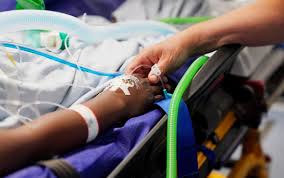A rare bacterial infection with a high fatality rate is spreading across Japan. Streptococcal toxic shock syndrome (STSS), commonly known as flesh-eating bacterial disease, has seen a sharp spike ever since Japan lifted the coronavirus travel restrictions. According to a Bloomberg report, a person infected with this disease may suffer a very painful death within 48 hours. Official data from Japan’s National Institute of Infectious Diseases shows that this year, the country has seen nearly 1,000 such cases till June, marking a dangerous increase in numbers compared to the last year.
Understanding Streptococcal Toxic Shock Syndrome
What is STSS?
Streptococcal Toxic Shock Syndrome (STSS) is a severe illness caused by the invasive Group A Streptococcus (GAS) bacteria. This bacteria can enter the body through wounds or breaks in the skin, leading to severe infections that can quickly become life-threatening.
Symptoms and Progression
The symptoms of STSS are often sudden and severe. They include:
- High fever
- Severe pain and swelling, especially in the infected area
- Redness and warmth around a wound
- Rapid heart rate
- Low blood pressure
- Confusion or disorientation
Without prompt medical intervention, the condition can rapidly progress to organ failure and death.
The Surge in Cases Post-Pandemic
Impact of Lifting Travel Restrictions
After the lifting of coronavirus travel restrictions, there has been a noticeable increase in STSS cases in Japan. The resumption of international travel and increased social interactions may have contributed to the spread of the bacteria.
Statistical Overview
This year, Japan has reported nearly 1,000 cases of STSS by June. This figure is significantly higher than the previous year’s statistics, indicating a worrying trend. Health authorities are on high alert, trying to curb the spread and educate the public about preventive measures.
Preventive Measures and Public Awareness
Hygiene and Sanitation
Maintaining proper hygiene and sanitation is crucial in preventing the spread of STSS. Regular handwashing, disinfecting wounds, and avoiding contact with infected individuals are essential steps.
Early Detection and Medical Intervention
Early detection and prompt medical intervention can save lives. People should be aware of the symptoms and seek immediate medical attention if they suspect an infection.
Public Health Campaigns
Public health campaigns are essential to spread awareness about STSS. These campaigns should focus on educating people about the symptoms, preventive measures, and the importance of seeking early medical help.
The Medical Community’s Response
Healthcare System Preparedness
Japan’s healthcare system is gearing up to handle the surge in STSS cases. Hospitals are being equipped with necessary resources, and healthcare professionals are being trained to manage and treat STSS effectively.
Research and Development
Ongoing research is crucial to understand the disease better and develop effective treatments. Scientists and medical researchers are working tirelessly to find solutions to combat this deadly infection.
The rise in Streptococcal Toxic Shock Syndrome cases in Japan is a cause for serious concern. As the country grapples with this alarming increase, it is imperative for both the public and the healthcare system to be vigilant. By maintaining proper hygiene, being aware of the symptoms, and seeking prompt medical attention, we can hope to mitigate the spread and impact of this deadly disease.




